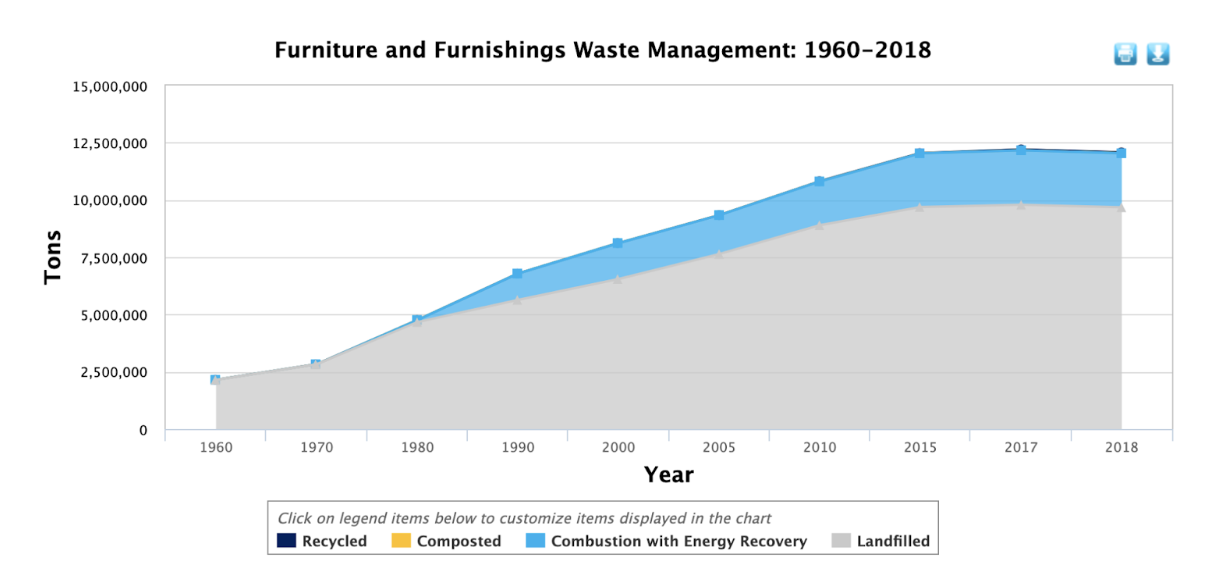December 13, 2024
Furniture; let’s take a second to really examine our homes.
When you’re renting or buying a house it’s common practice for the place to be completely cleaned and emptied out of all personal belongings.
So, what about the furniture? Do you bring it with you or leave it curbside? If you’re renting do you take a place that’s already completely furnished?… Or start from scratch?
These are the basic questions people face when they need to move. So, what are your options? And what effect do your choices have on a grand scale? How do these concerns apply when you’re moving offices or starting a new job?
Over the past few decades the scale of ‘fast furniture’ in the market, and in our landfills, has vastly increased. ‘Fast furniture’ is made to last for only a short time before needing to be tossed out.
“Many of the Ikea beds and Wayfair desks bought during the Covid-19 lockdown were designed to last about five years, said Deana McDonagh, a professor of industrial design at the University of Illinois, Urbana-Champaign.”
Furniture is no longer being made to last the test of time. According to the EPA between 1960 and 2023 the amount of furniture being tossed out has gone up by 450%. From 2.2 million tons in 1960 to 12.1 million tons in 2018 (seen in the table below). Which means – today we are throwing out nearly 5X the amount of waste as we were 63 years ago. While some of the waste in 2018 managed to be recycled, 80.1% had to go directly to the landfills.

Within the US there are over 3,000 active landfills and 10,000 closed landfills. While these sites keep communities clean and reduce the risks of disease they don’t occur without other impacts. They produce methane gas and leak into the surrounding environment. These leaks can cause a lack of clean oxygen and allow toxins to absorb into aquifers (our drinking water). On average landfills cause a decrease in the surrounding land value by 12.9% – meaning lower-income and minority neighborhoods are often developed in close proximity to them. A study in New York found a 12% increase in congenital malformations in children born to families that live within a mile radius of a hazardous landfill site.
So what can be done to prevent sending more furniture into our landfills?
Companies like Ikea and Wayfair have vowed to make changes after the pandemic. Currently 98% of the furniture and packaging at Ikea is made from recycled, renewable or recyclable materials and both companies vowed to be a zero waste company by 2030. Wayfair diverted 42% of their operational waste in 2023.
Other companies like Humanscale, Kaiyo and Fernish try to create a more circular economy by reselling furniture, saving pieces from landfills and creating new pieces from what was considered trash.
At CallSheilah! we deal directly with each of our clients to donate, resell, and refurbish as much as we are able. We donate to charities and other organizations that need it. Such as;
Evergreen Meadow Academy (a school for middle school aged girls with trauma), the United States Committee on Immigrants and Refugees, TranSanta, and Grass Roots Givers.
However, whenever possible we give the valuable and usable items our clients are parting with – directly to people in need. Sometimes skipping over the charity removes a layer of obstruction for people living in poverty.
At CallSheilah! We always work with sustainability and compassion in mind. Make sure your furniture, housewares, decor, and other usable items are in good hands when you work with us; whether it’s in the home or office. Do your part to upend the fast furniture trends.





